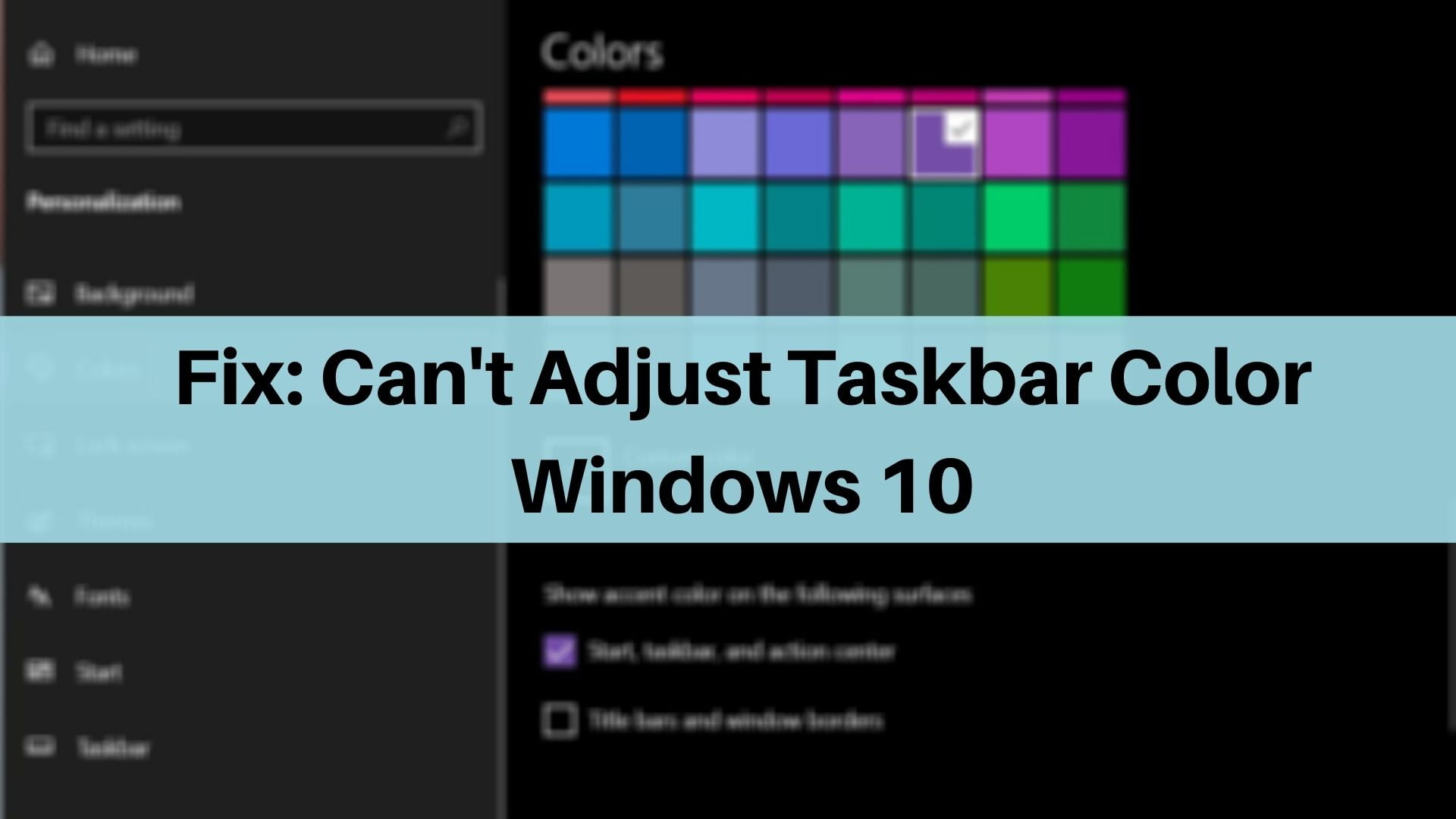

It should be noted that while the taskbar color will change, the Start Button will always remain green.Ĭhange the Task Bar Color in Windows Vista Once the taskbar is customized as desired, click OK to close the dialog box.
/Settings-743b3fd7d16d4bd497ba9c57acea34e9.jpg)
Once that’s set, scroll back up on the “Colors” page, and you can pick any color you’d like for your accent. If you’d like to use it, place a checkmark in the box beside it. (Since you chose “Custom” earlier, you can set “Choose your default app mode” to either “Light” or “Dark” depending on your personal preference.)Īfter that, scroll down the page until you see “Show accent color on the following surfaces.” Since you’re in dark mode, the “Start, taskbar, and action center” option will no longer be grayed out. Under “Choose your default Windows mode,” click the radio button beside “Dark.” This will allow you to set an accent color for your Start menu and taskbar. When you select “Custom” from the “Choose your color” menu, two new options will appear below.

In “Colors” settings, click the “Choose your color” drop-down menu and select “Custom.” In “Personalization,” click “Colors” in the sidebar. You can press Windows+i on your keyboard to open the Settings window. Launch Settings by clicking your Start menu and selecting the small gear icon. To fix it, we’ll need to change to dark mode first. If you’re in light mode and you visit “Colors” in Settings, you’ll see the “Start, taskbar, and action center” grayed out. Here’s how to get the option back.īy default, you can’t set accent colors on the Start menu and taskbar in Windows 10 unless you have your appearance set to dark mode. You may see the option grayed out in Settings. Beginning with the October 2020 update, Windows 10 defaults to a light theme that prevents you from setting an accent color for your Start menu, taskbar, and action center.


 0 kommentar(er)
0 kommentar(er)
